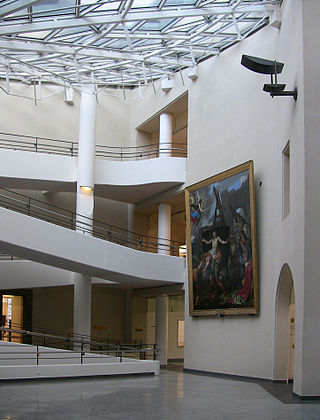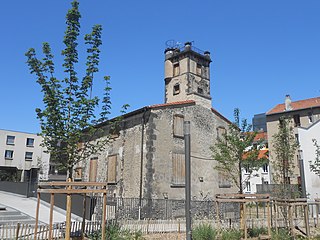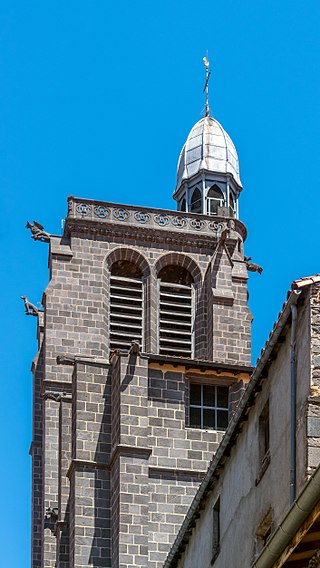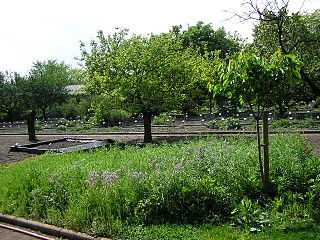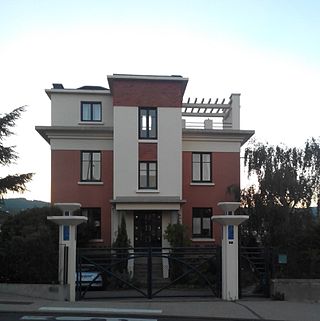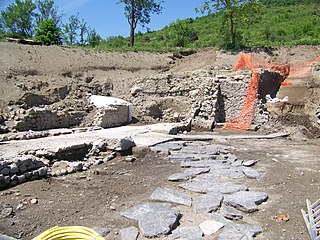7 Sights in Clermont-Ferrand, France (with Map and Images)
Legend
Welcome to your journey through the most beautiful sights in Clermont-Ferrand, France! Whether you want to discover the city's historical treasures or experience its modern highlights, you'll find everything your heart desires here. Be inspired by our selection and plan your unforgettable adventure in Clermont-Ferrand. Dive into the diversity of this fascinating city and discover everything it has to offer.
1. Musée d'Art Roger Quilliot
The Roger-Quilliot Art Museum (MARQ) is located in Clermont-Ferrand in part of the buildings of a former Ursuline convent built in the seventeenth century. This building is classified as a historical monument. The museum opened in 1992 as the Musée des Beaux-Arts and was then renamed after a former mayor of Clermont-Ferrand, Roger Quilliot.
2. Fortifications de Montferrand
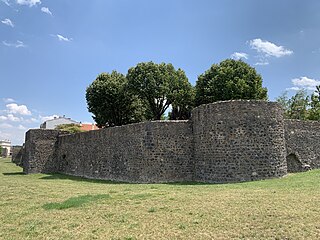
The ramparts of Montferrand are an urban fortification located in Montferrand, a district of Clermont-Ferrand and former rival city of Clermont. The enclosure was built from the fourth quarter of the twelfth century to the sixteenth century to protect the county town of Montferrand. Largely integrated into later constructions, it has largely been preserved. It has been classified as a historical monument since 2012.
3. Château de Rabanesse
The Château de Rabanesse, sometimes incorrectly called the Pascal Tower, is a castle located on Place Louise Bourgeois in Clermont-Ferrand, France. It has been listed as a historical monument since 2009.
4. Église Notre-Dame de Prospérité
The Church of Notre-Dame-de-Prospérité or Church of Notre-Dame de Montferrand is a former Catholic collegiate church located in Montferrand in Clermont-Ferrand, Auvergne. It was classified as a historical monument in 1846.
Wikipedia: Église Notre-Dame-de-Prospérité de Clermont-Ferrand (FR)
5. Jardin Botanique de la Charme
The Jardin botanique de la Charme, formerly known as the Jardin botanique de la Ville de Clermont-Ferrand, is a municipal botanical garden located at 10, rue de la Charme, Clermont-Ferrand, Puy-de-Dôme, Auvergne, France. It is open weekdays year-round plus weekends in the warmer months; admission is free.
6. Villa Gros
Villa Gros is a villa located in Clermont-Ferrand, France. It was built in 1936. The villa has been listed as a historical monument since 2009. Resulting from several architectural and decorative influences, it is a synthesis of the styles of the 1930s and an intermediate milestone between the bourgeois house before the First World War and the contemporary pavilion of the second half of the 20th century. Classic bourgeois tradition of the farmhouse with a massed plan. Art Deco taste for the gate, the porch with columns, the pergola, the cornices and the planters. Regionalist style displayed in the treatment of the facades. International modernist style favouring fluidity and purity of volumes and the use of modern materials. "Liner" style in the semi-circular balconies with tubular railings. It was owned by the Michelin group from 1961 to 1978. It is nicknamed the "Hibou villa", after its occupants since 1968, the Hibou family.
7. Sanctuaire de Trémonteix
The Trémonteix sanctuary was a Roman sanctuary with a double fanum and a single cella linked to a Roman villa. It was built 2.5 km from the center of the ancient city of Augustonemetum/Clermont-Ferrand, France. Discovered in 2009 during a preventive archaeology study, the villa was excavated between 2010 and 2011, then partially destroyed by the subsequent development work. Only the sanctuary, listed as a historic monument in 2012, has been preserved in a green zone.
Share
How likely are you to recommend us?
Disclaimer Please be aware of your surroundings and do not enter private property. We are not liable for any damages that occur during the tours.
